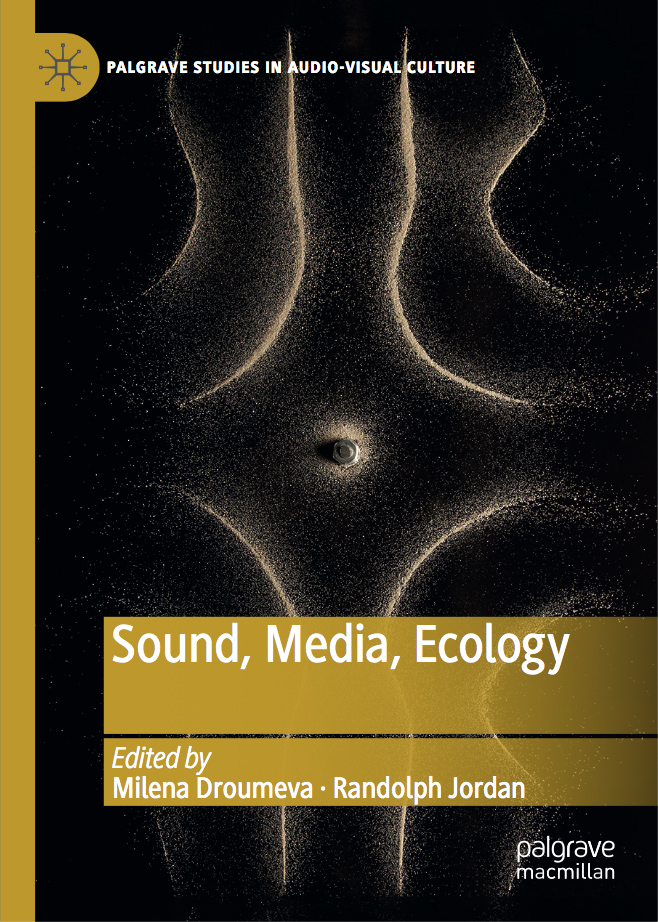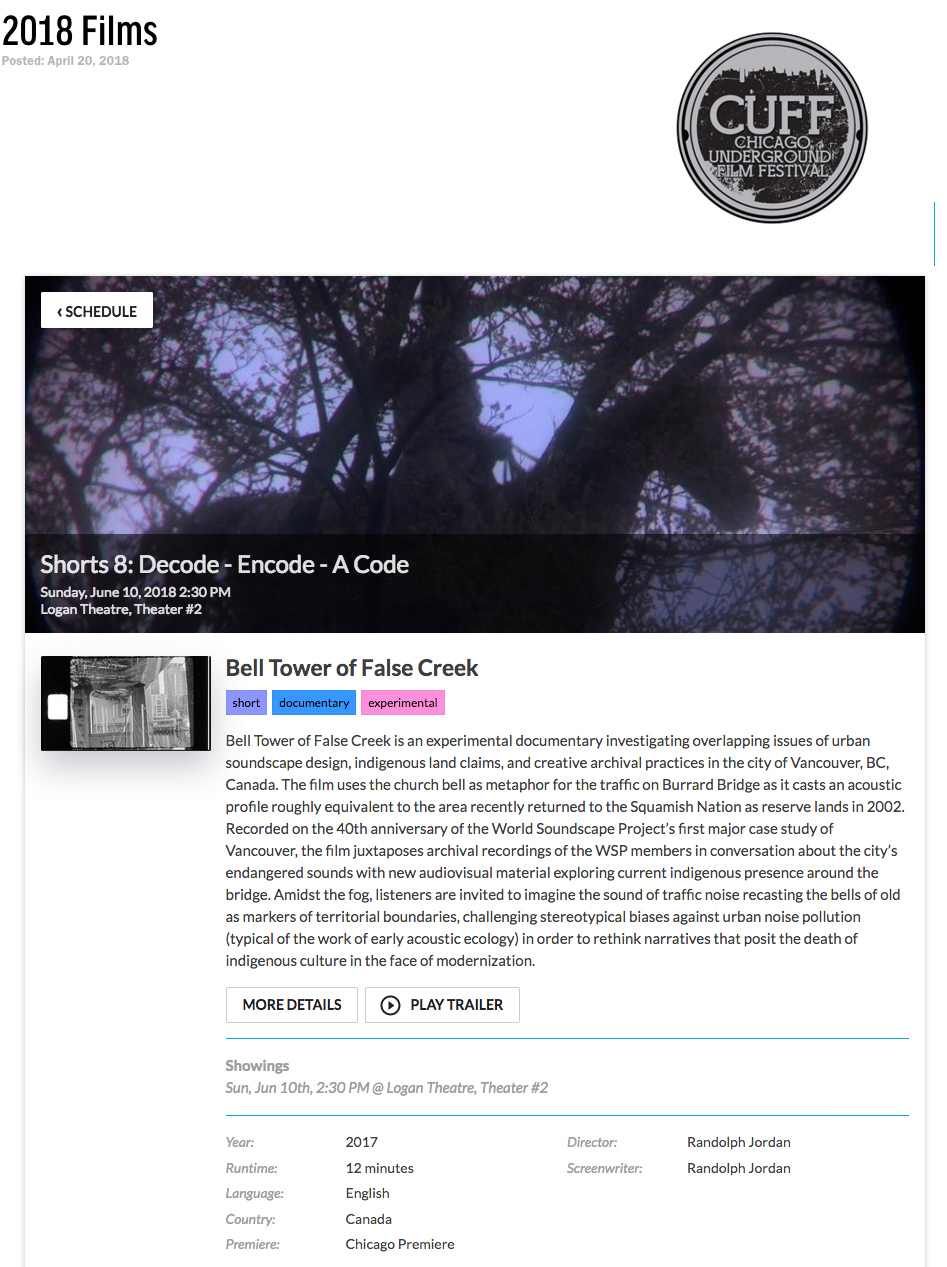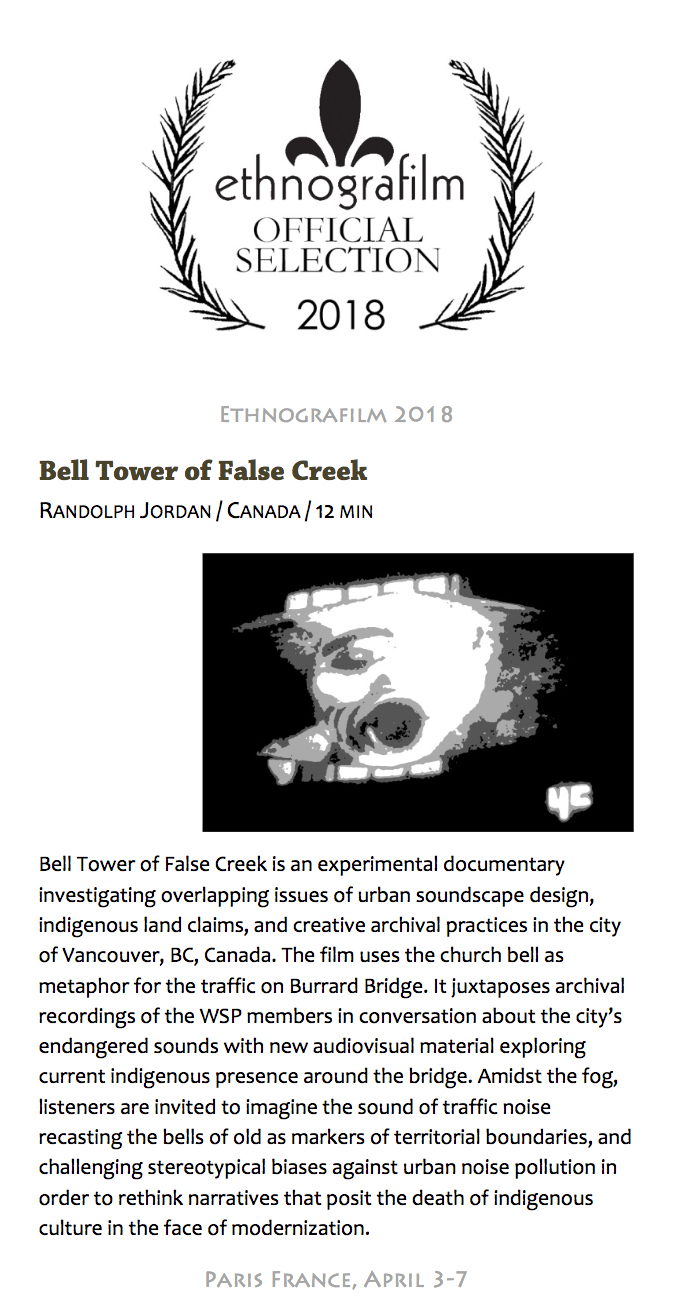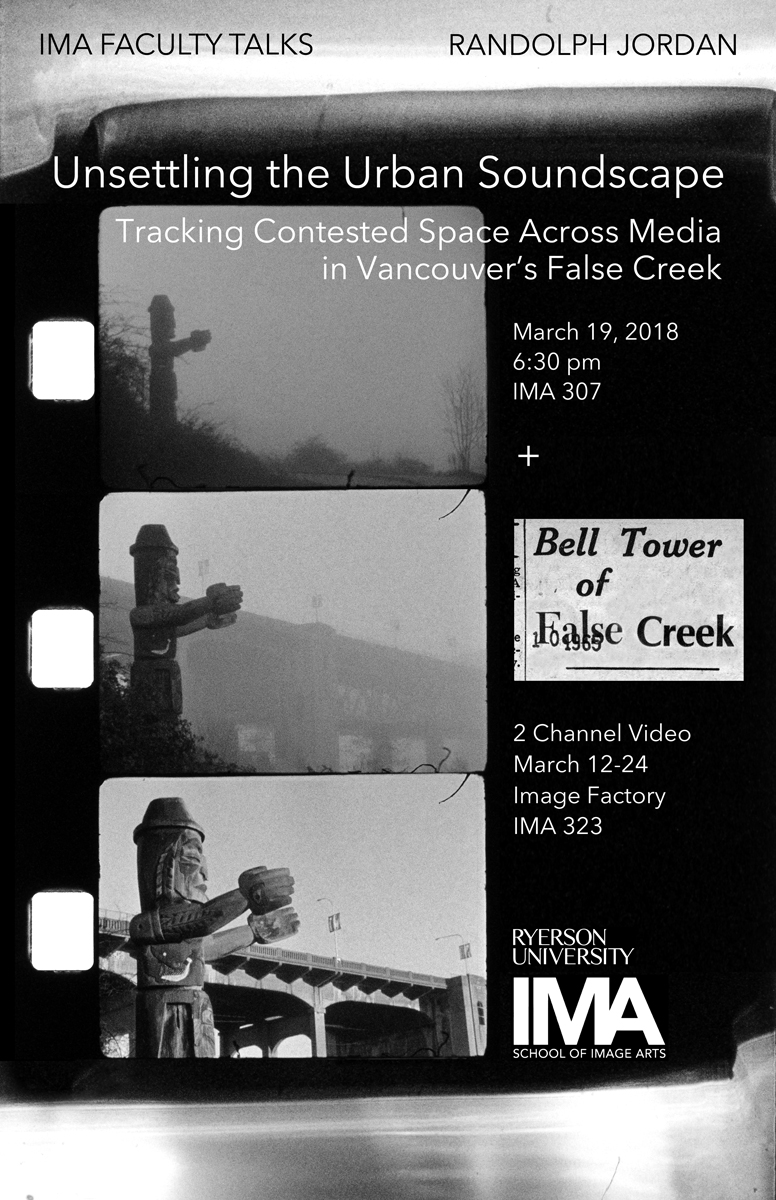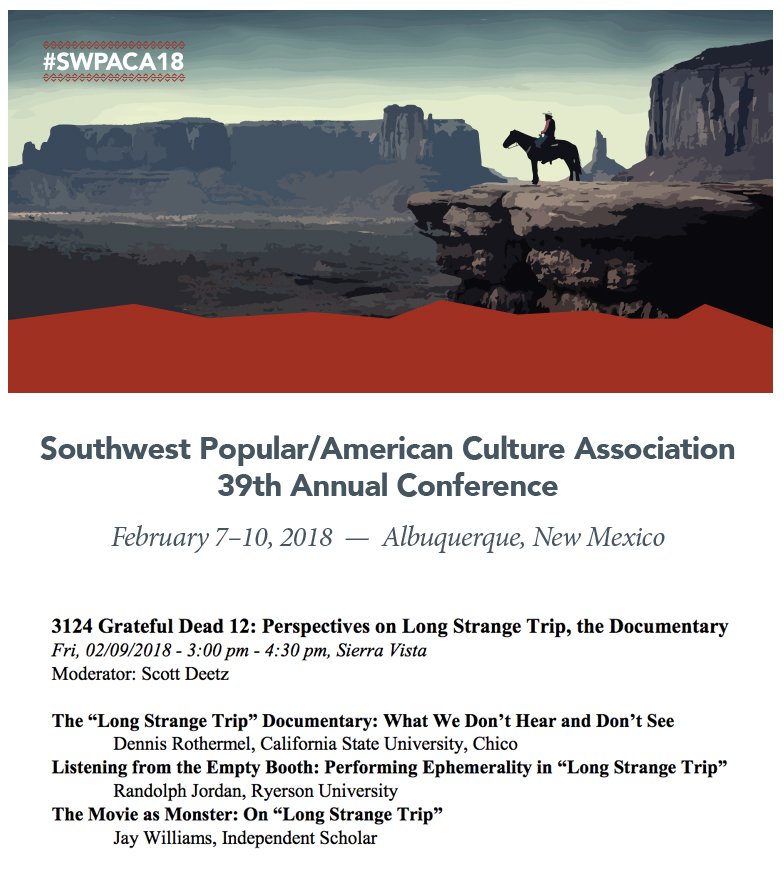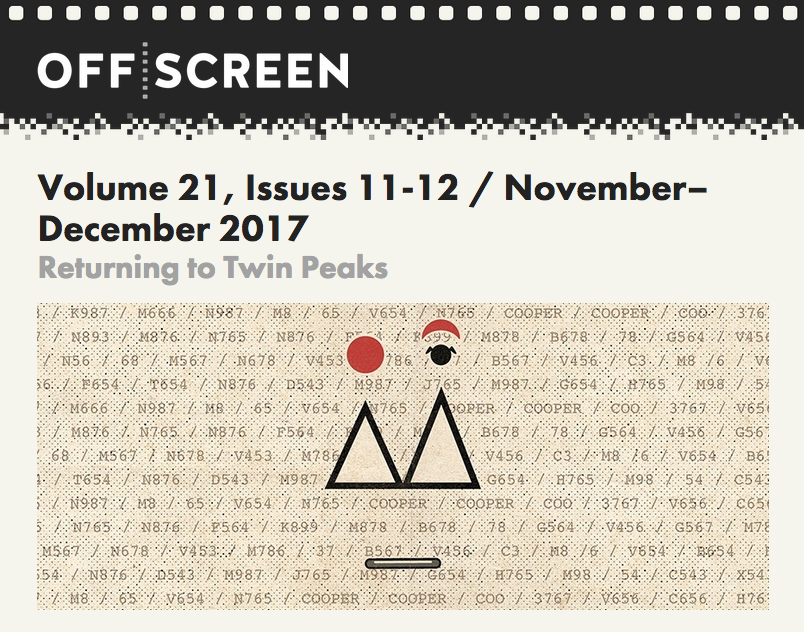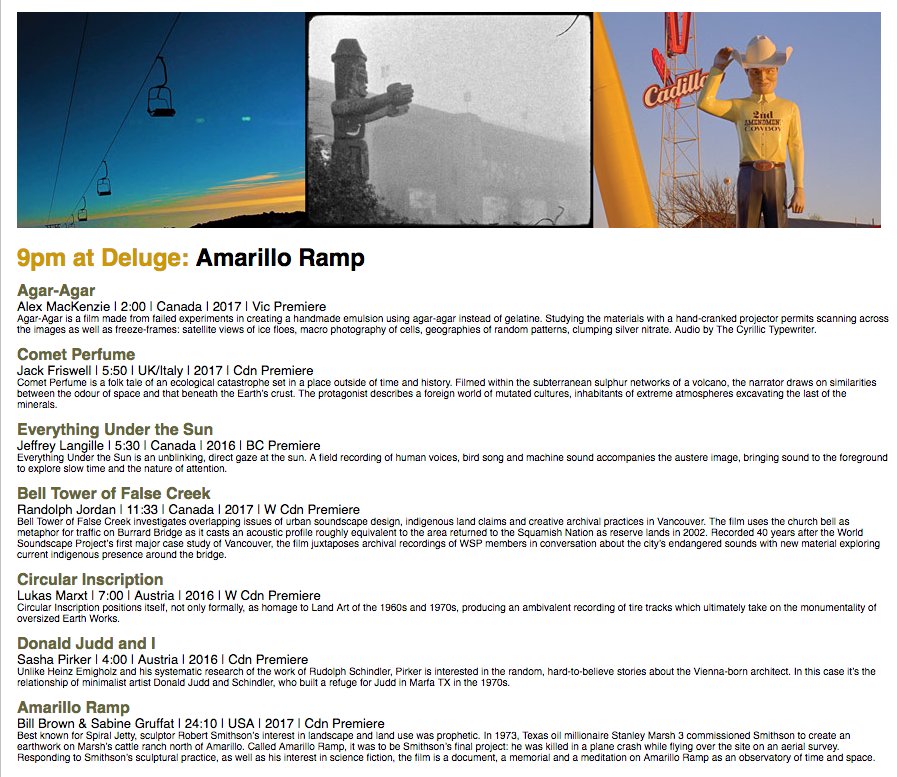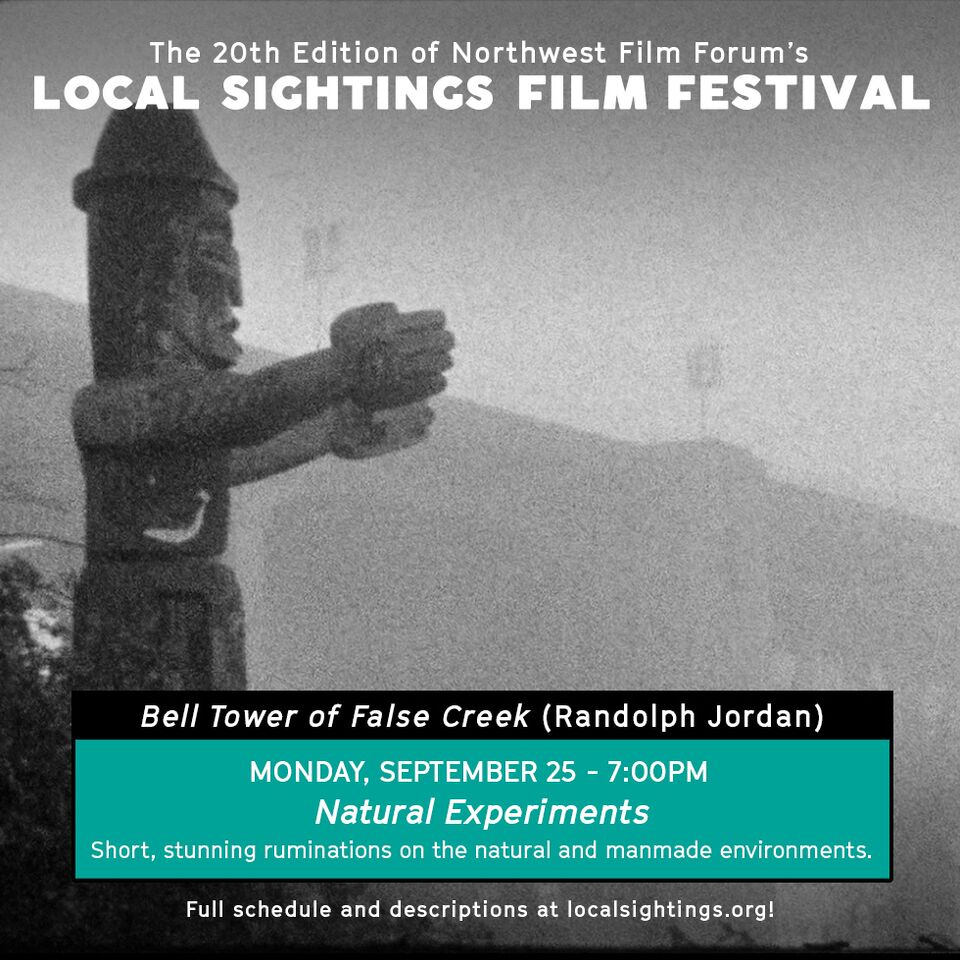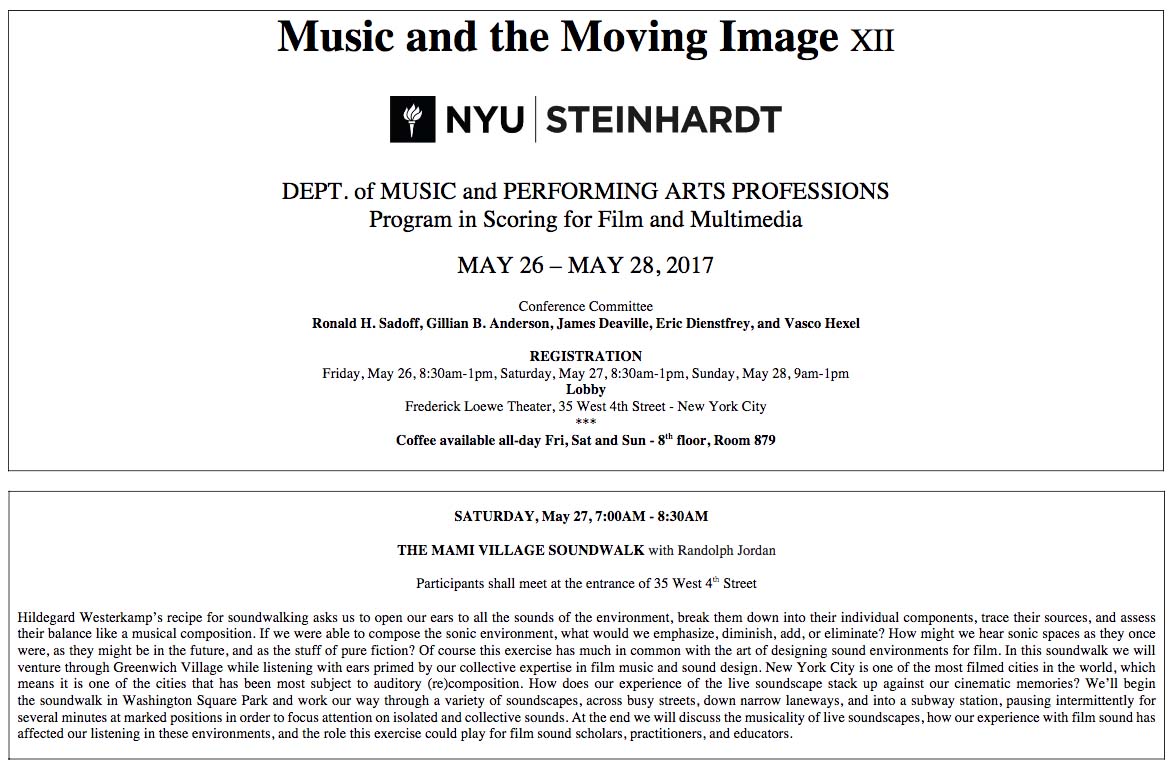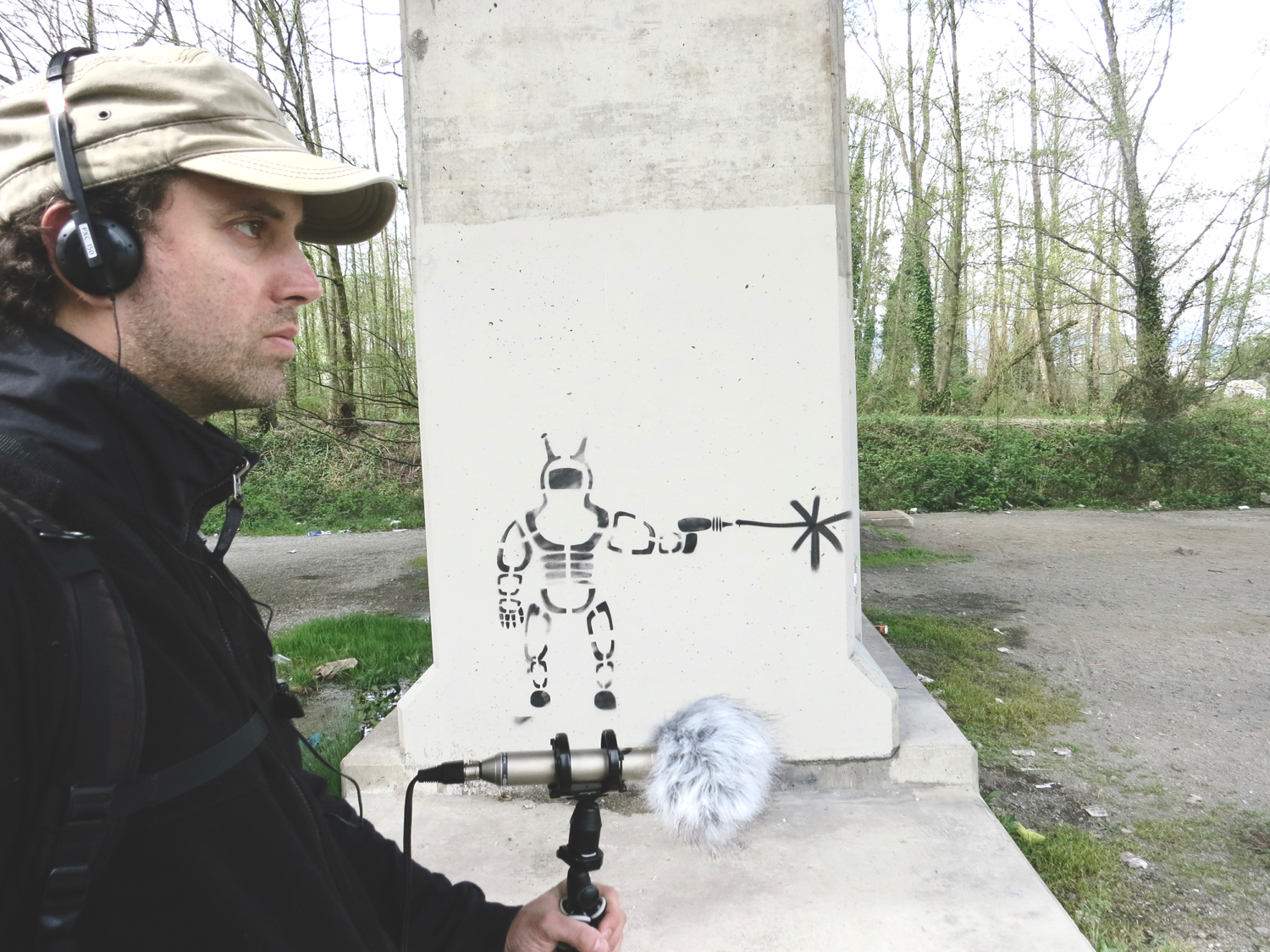New Book!
Publication date: Aug. 30, 2019
Cover photo by Gary James Joynes
Research Promo
A short video about my Bell Tower of False Creek project produced by students of Dr. Jane Griffith in the Professional Communication program at Ryerson University.
Bell Tower of False Creek Screening at the Chicago Underground Film Festival June 10th, 2018
My Bell Tower of False Creek film has been selected for presentation at this year’s Chicago Underground Film Festival in the “Shorts 8: Decode-Encode-A Code” program on Sunday, June 10th.
Bell Tower of False Creek Screening at Ethnografilm in Paris April 3-7 2018
My Bell Tower of False Creek film has been selected for presentation at this year’s Ethnografilm Festival in Paris, France, April 3-7, 2018.
Public Talk and Video Installation at the School of Image Arts, Ryerson University, March 12-24, 2018.
I’ll be mounting the first 2 channel video iteration of my Bell Tower of False Creek Project at the Image Factory in the School of Image Arts, Ryerson University, March 12-24, 2018. In conjunction with the installation I’ll be giving a public talk on March 19th about the research component entitled, Unsettling the Urban Soundscape: Tracking Contested Space Across Media in Vancouver’s False Creek.
Paper Presentation at the Grateful Dead Scholars Caucus, Feb. 7-10, 2018.
At long last I’m making my first visit to the Grateful Dead Scholars Caucus at the Southwest Popular / American Culture Association in Albuquerque, New Mexcio, Feb. 7-10, 2018.
Paper Abstract:
In Amir Bar-Lev’s documentary Long Strange Trip, we are told the story of the recording engineer on the Europe ’72 tour that left his post in the mobile studio truck to enter the venue and witness the band performing one of its best renditions of “Morning Dew.” He had to be there, and he had to get it on tape. He got his cake, and he ate it too: the track came out just exactly perfect enough to make the cut on the final album release. In this paper I argue that, through stories like this, Long Strange Trip is self-consciously about the act of performing the history of the Grateful Dead just as it reports on that history. Sporting the tagline “The Untold Story of the Grateful Dead,” the film capitalizes on a series of underrepresented stories to piece together an image of a band always on the edge of self-destruction, no captain at the wheel to keep it on course, even as it appeared increasingly indestructible as the years wore on. This tension between precarity and longevity is mirrored by the band’s storied relationship with live recording: capturing their notoriously ephemeral performances on tape seems anathema to what they were about as live performers while being essential to forming the Deadhead community experience that made the continuing performances possible. The absence of the “real thing” at the core of the band’s documentation fueled the presence that the band embodied at their shows. I will demonstrate how the film enacts this same tension by organizing itself around the amplification of lost moments of the band’s history of performance, which is, in turn, enacted by the balance that the film holds between performance as subject of the film and performance as the very mode of the film itself. To make my point I will situate Bar-Lev’s reflexive strategies within the discourse of what has come to be known as the “performative” mode of documentary filmmaking, and tie this to issues of sonic representation specific to the “rockumentary” genre to reveal how Long Strange Trip becomes a way of thinking about the Grateful Dead’s history informed by the band’s own performance strategies. The evocative figure of the empty recording booth becomes the marker of the structuring absence at the core of Long Strange Trip: the film’s job is not only to fill gaps in the history of the band and its documentation, but to perform the very idea of the absence at the heart of its media presence that drives the film forward. The booth is empty, but the tape rolls on.
Special Issue of Offscreen on Twin Peaks: The Return
I was guest-editor for a special double-issue of Offscreen dedicated to Twin Peaks: The Return to close out the journal’s 20th anniversary year.
Bell Tower of False Creek screening at Antimatter Media Art festival in Victoria on Oct. 18th 2017
The Antimatter Media Art festival in Victoria, B.C. is screening my short film Bell Tower of False Creek in its “Amarillo Ramp” program on Wednesday, Oct. 18th, at 9 pm.
Bell Tower of False Creek screening at Local Sightings in Seattle, Sept. 25th, 2017
The Local Sightings film festival is screening my short film Bell Tower of False Creek in their “Natural Experiments” program on Monday, Sept. 30th, 2017.
Soundwalk and paper for the Music and the Moving Image conference at NYU, May 26-28th 2017
I will be leading the inaugural MaMI Village Soundwalk at this year’s Music and the Moving Image conference at New York University. The walk will be geared especially towards applying our skills as scholars of film sound to the art of listening in real-world environments in order to discover how each can inform the other. I’ll also be presenting a paper on the use of surround sound to explore cross-cultural communication in Terrence Malick’s The New World.
Soundwalk Abstract:
Hildegard Westerkamp’s recipe for soundwalking asks us to open our ears to all the sounds of the environment, break them down into their individual components, trace their sources, and assess their balance like a musical composition. If we were able to compose the sonic environment, what would we emphasize, diminish, add, or eliminate? How might we hear sonic spaces as they once were, as they might be in the future, and as the stuff of pure fiction? Of course this exercise has much in common with the art of designing sound environments for film. In this soundwalk we will venture through Greenwich Village while listening with ears primed by our collective expertise in film music and sound design. New York City is one of the most filmed cities in the world, which means it is one of the cities that has been most subject to auditory (re)composition. How does our experience of the live soundscape stack up against our cinematic memories? We’ll begin the soundwalk in Washington Square Park and work our way through a variety of soundscapes, across busy streets, down narrow laneways, and into a subway station, pausing intermittently for several minutes at marked positions in order to focus attention on isolated and collective sounds. At the end we will discuss the music ality of live soundscapes, how our experience with film sound has affected our listening in these environments, and the role this exercise could play for film sound scholars, practitioners, and educators.
Paper Abstract:
“Sing the Story of Our Land”: Intersecting Soundways and Contested Spaces in The New World
In this paper I examine Terrence Malick’s The New World (2005) as a form of creative historical research that has much in common with acoustic ecology’s interest in reconstructing and reimagining the soundscapes of the past, an increasingly popular area of investigation in sound studies more generally. Malick stages the tale of John Smith’s 1607 arrival in Virginia with a particularly rich approach to sound design that emphasizes not only authentic period detail but also the multiple subjective perspectives that have led to persistent popular mythologies surrounding this moment of first contact. The film’s soundtrack invites the audience to become immersed in narratives of cross-cultural tension and communication, as well as the problems of period filmmaking, through the complex staging of sound as a powerful confluence of technological sophistication, contemporary historical research, and aesthetic innovation. Drawing on recent research into the role of sound in the cultures of the English and the Algonquin of the early 17th Century, I situate the editing and mixing strategies of Malick’s sound designer Skip Lievsay (and his extensive use of historical sound archives) in the context of recent work on multi-channel sound technologies and context-based composition in electroacoustic music and acoustic ecology. Ultimately I demonstrate that Malick and Lievsay maximize the technological potential of the day to position their listeners at points of intersection and overlap between often contradictory ways of knowing the worlds their characters inhabit, which, in turn, exposes the artifice of the film’s periodization to reveal historical truths otherwise inaccessible.
